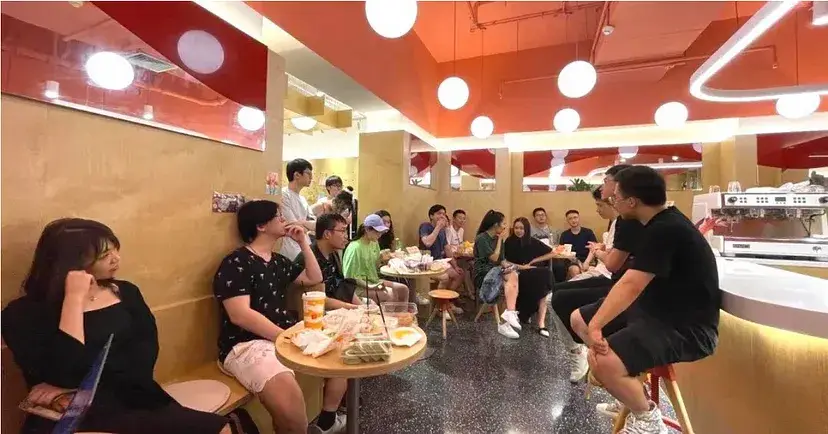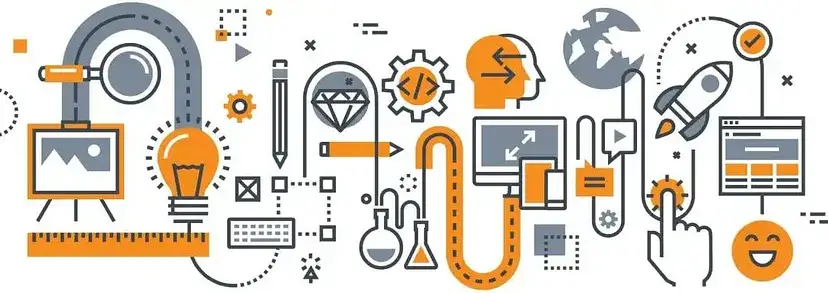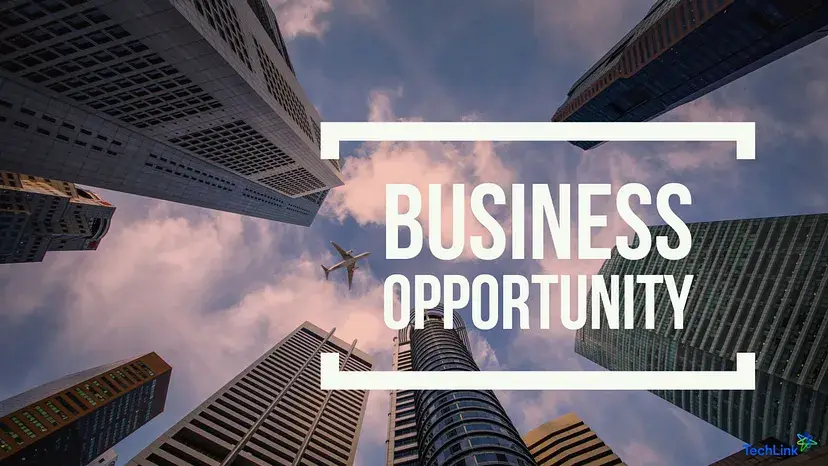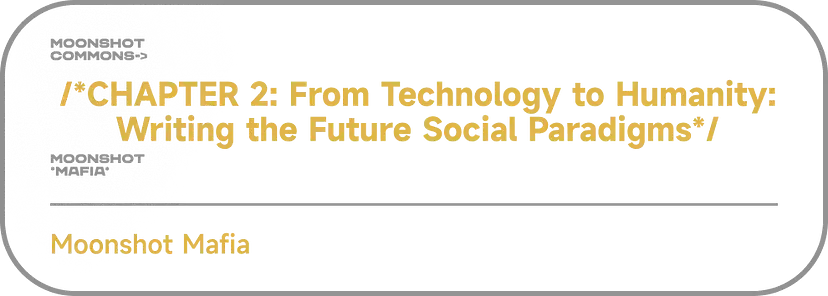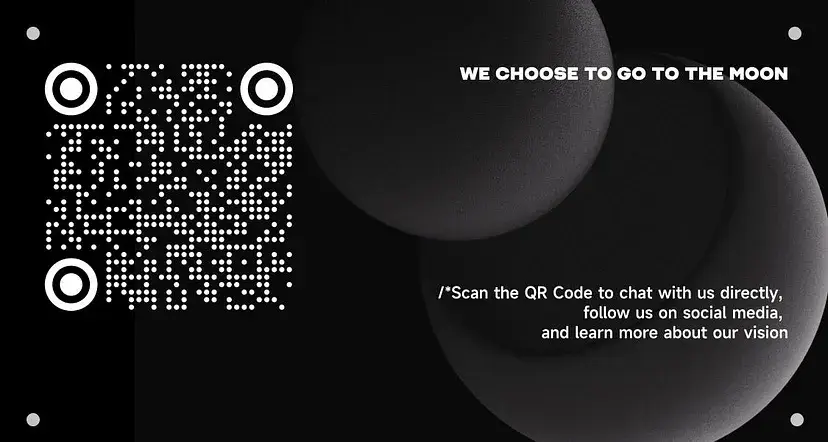At Moonshot Commons’ Web3 Fireside Chat #13, we invited Sunny Gao, founder of SegmentFault, Jie Wu, founder of Shimo, Jing Sun, co-founder of IoTeX, and Sherlock, founder of Meson Network, to discuss the future of the virtual world. SegmentFault is the leading next-generation technology Q&A community in China. Its team provides Chinese developers with a genuine, high-quality technical communication platform and cutting-edge tech industry news. It has now reached and served over 10 million developers and IT information practitioners, helping developers solve millions of technical problems. It also has more than 100,000 original technical articles published by users and over 10 million web visits by developers monthly.
IoTeX is a fast, secure, and decentralized platform that connects real-world devices, data, and utility to blockchain dApps. It is backed by award-winning research and technology, IoTeX currently leads the world’s premier industry consortiums and standards bodies. The IoTeX blockchain already powers real devices, including award-winning blockchain-powered cameras from Consumer Electronic Show (CES) and the pebble geo device, perfect for supply chain optimization in any industry. Shimo is China’s first online collaborative office software. It has always maintained its leadership position in the industry. It became the most complete and functional enterprise-level collaborative office suite in China. Shimo provides a variety of customized services to meet the differences in various enterprise office styles. It promotes the evolution and popularization of the modern office model of “office collaboration, data asset, security system, and organization system” in China.
Meson Network is creating the world’s largest bandwidth marketplace. It builds a protocol to standardize the infra resources and offers a market for people to trade globally. Users can exchange their unused bandwidth resources with Meson for tokens, and those who need bandwidth will come to Meson’s market to borrow bandwidth anywhere in the world. They can also use the bandwidth to accelerate their Content, Audio, Images, Videos, and Game Packages globally.
Past Moonshot Mafia
Key Takeaways:
1.The bear market can present a level playing field for entrepreneurs who are truly dedicated to their work and allows them to focus on what they want to achieve.
2.The rise of Web3 technology is a natural response to the limitations and closed ecosystems of Web2 companies.
3.Open-source software development models, where people come together to create something meaningful, are likely to be the template for cooperation in the future.
4.Web3 offers a new paradigm in our increasingly digital and virtual world by providing user sovereignty and decentralized trust, which is crucial for lasting solutions.
5.The potential for projects in the future to have a mechanism that will enable them to continue operating for years to come, even after the existence of human beings, is an interesting change that some technicians are exploring.
6.To develop a healthy and organic decentralized ecology, a project party should focus on building a strong community through the use of tokens as incentives to help build their network.
Moonshot Commons:
As pioneering innovators in the fields of science and technology, could each of you please share your entrepreneurial journey and the experiences you had along the way?
Sunny:
I’m Sunny, the founder of SegmentFault. SegmentFault is a technical Q&A platform for programmers and developers. With a decade of accumulation, we have more than 7 million registered users, millions of questions answered, and have created an expansive open-source knowledge base.
In 2012, I dropped out of college and started a business with my friends. In addition to my passion for entrepreneurship, the founding team at that time contributed a lot to my decision. We first connected through the open-source project community, similar to the current Web3 community where ideas are freely exchanged. Fortunately, over the past decade, our founding team has managed to stay connected and collaborate effectively. That is why I believe it’s essential to find a team and partners that align with you.
If I wish to convey the motivation I’ve gained from my prior entrepreneurial endeavors, I’ll use these phrases:
Seize the opportunity, Grasp the process, and Flourish in creativity.
In order to stay ahead of the game and make the most of your development efforts, it is fundamental to remain informed of current and future industry trends. Understanding the objective laws of the industry is essential to determine the size of its demand and the capabilities of your team.
Although these words have given me a lot of inspiration recently, I had never considered the potential of this methodology when I first started my business. Nevertheless, we have been relatively fortunate in the process. Our entrepreneurial team has remained united, and we have persisted in doing what we love. If our motivation stems from the love in our hearts, it will consistently enable us to do things well.
Jing:
IoTeX is considered an early project in Web3. We started in 2017 with a big vision for this space from the beginning. I used to be an investor in Silicon Valley. I noticed the first stirrings of Ethereum’s smart contracts around 2014 and 2015 and saw that many of the venture capital firms I worked with had started to explore this emerging field.
After an extensive analysis, I discovered that Web3 could be a major technological breakthrough and a significant wave. I wanted to be a builder and an active participant in this movement, working to create products that are valuable to Web3. I made the transition from an investor to a builder and founded IoTeX.
We have long sought to bridge the gap between Web3 and the physical world through IoTeX. We recognize the value of Web3 in reducing the cost of trust and enabling the financialization of valuable items. Our goal was to connect the value of the physical world, whether it be human or machine interactions, to Web3 and to empower Web3 developers. At the time, there was a significant lack of infrastructure in the industry and Ethereum was still in its early stage. This necessitated the creation of infrastructure such as public chains and the further development of these tools, which has led us to where we are today.
It is often said that a day in the world of Web3 is like a year in the real world. In our experience, we have gone through two market cycles, from bull to bear and back again. From my perspective, I believe the bear market is the best time for those with ambition. It presents a level playing field for those who are truly dedicated to their work and gives them the opportunity to really focus on what they want to achieve.
As an entrepreneur, you may be drawn to a sector because of its popularity, but it’s not enough to just be a part of it. What will make you successful is the effort you put in after coming on board. The person who can learn the quickest, experiment, and find the right market fit the fastest will have the best chance of success. It won’t be an easy process.
Entrepreneurship is a roller coaster ride of highs and lows, no matter how successful you may be.
Sherlock:
I am the CEO of Meson Network and a back-end engineer. My entrepreneurial journey has been a winding road. I began my foray into mathematics and algorithm competitions during my college years. Upon graduating, I was eager to apply my knowledge and skills to a big corporation.
But I gradually came into contact with the Web3 industry. Initially, I was intrigued by the Web3 industry and wanted to understand the technical aspects of its design. Personally, I am used to looking at new things with a critical eye. When others say something is good, I would like to study its underlying structure and use my own knowledge system to judge whether it is true or not. So I participated in a lot of discussions at that time, and, as I delved further, I intuitively felt that this could be a tremendous opportunity. Thus, I kept exploring this road to see if I could discover something more remarkable.
In this way, I officially entered the industry half a year before graduation and had several entrepreneurial ventures. Despite their successes, I felt that some aspects of my business had been rushed and that I had been exposed to technology and investment leaders who were beyond my experience and ability. This led to some internal conflicts as the project went through its natural cycle. Later, entrepreneurship felt like a business and gradually became mechanized. Although I am in contact with Web3 every day, I felt that I was getting farther and farther away from its essence, which left me feeling lost. Then I took a pause from entrepreneurship.
At that time, I was still young and the industry was relatively new. With a thirst for knowledge, I joined a leading company in the industry and was entrusted with research and development. This experience enabled me to take a step back and reflect on the potential of the industry and its possible directions. Through close examination of the industry’s stakeholders and processes, I gained valuable insights, which I then consolidated and used to formulate industry principles and explore the possibilities.
In an incredibly fortuitous instance, I connected with my current business partner over the phone. As engineers, we had the same issue we wanted to tackle, so we decided to start our venture together. We were a team of three, and we still have endured many struggles and uncertainties until now.
In conclusion, based on my personal experience, I believe that each generation holds its own unique opportunities. It is paramount to be able to identify and seize the opportunities that are available. Additionally, it is important to consider the overall industry trends and prioritize discerning which direction the trends are headed.
Secondly, when entering an industry, it’s important to remember that you are starting at the bottom. Learning the rules of the industry and understanding how they are designed is the most critical part of the process. Just as when we learn to drive, we must first understand the rules of the road and the potential dangers of driving before taking the wheel. By having a firm grasp of the rules, we can more effectively communicate with others.
Finally, I would like to emphasize the importance of having a long-term outlook when starting a business. In the short term, it can be easy to become overwhelmed by the sheer number of decisions to make, resulting in hasty and anxious choices. Nonetheless, taking a step back to consider the long-term implications of a given opportunity can help you to identify which decisions are truly crucial. By being able to differentiate between immediate needs and those with lasting values, you can make informed choices that will benefit you in the long run.
Wu Jie:
I started my business in 2014. Later, I decided to pursue my dream of becoming a tech entrepreneur by moving to Silicon Valley. I eventually returned to China and founded Shimo.
In retrospect, our idea of starting a business seemed very simple — just do what you want to do. When I was in Silicon Valley, I was influenced by the abundance of online software tools. However, back in China, these tools were virtually non-existent, which drove me to create this online document to bridge the gap.
In reality, there is not much separating all of us at the outset; the only thing that sets us apart is our choices and our courage. When it comes to the strategy of progress, everyone initially has very little knowledge, and can only progress incrementally, guided by their instincts. At that moment, people may not have taken the time to think things through thoroughly, and instead acted with enthusiasm; on the flip side, when they overthink and overanalyze, they can become paralyzed with uncertainty.
With regard to long-term growth prospects, the first thing to bear in mind is to heed the characteristics of the times when venturing into business. Each era is distinct and, with it, comes novel and unforeseen difficulties that demand careful consideration.
Secondly, when starting a business, it’s important to take a step back and assess its true value rather than chasing after fleeting opportunities. In order to remain level-headed, it’s crucial to maintain an objective viewpoint and not get overwhelmed by an influx of information.
From a practical perspective, it is essential to ensure that your actions are meaningful and have a logical structure, rather than just addressing one single point of an issue.
In my opinion, the entire ecological cycle of nature is akin to the creation and expenditure of money. If we can find a suitable balance point in this cycle, we can ensure its preservation. We should consider whether something has a place in the larger system before beginning a business or wasting our own and others’ time, effort, and money.
Moonshot Commons:
In your opinion, what kind of societal shifts will be brought about by the current surge of digital technology?
Sunny:
In 2008, I came into contact with the Internet and experienced very different feelings in a short amount of time. For example, before, I was able to communicate with people from all across the globe and learn new things without much interference. However, over time, due to a variety of reasons, we have been unable to take full advantage of the Internet’s many benefits.
Among them, I saw a phenomenon: in this day and age, the real world is gradually fragmented, and many of them have penetrated into the current digital world.
In the digital age, the emergence of powerful companies such as Meta and ByteDance is commonplace, both in China and around the world. This is a natural consequence of the Web2 company model, where the pursuit of greater profits and improved development of listed companies has become the norm. As these platforms become increasingly monopolized, the concept of a ‘closed’ system has risen to prominence. Despite the ease of communication offered by WeChat, I still find its closed ecosystem to be limiting in terms of content and design. For example, the content I post on my official account is much less likely to be discovered by search engines, preventing me from expanding my digital and content ecology and reaching more users.
On the other hand, the emergence of such issues has not been the sole factor driving the development of a new ecology like Web3. It has been the perception of closure that has motivated the emergence of a system that utilizes numbers and codes to achieve cross-border and political interoperability, thereby forming a new consensus and striving to protect the rights and interests of users.”
In this context, many new models have emerged, including the rise of open-source software.
Today, a multitude of software applications rely heavily on open-source technologies. This development model is the result of a collective effort, with people from different companies, countries, and time zones coming together to create something meaningful. This new way of working together is likely to be the template for cooperation in the future.
Although we are individuals, if we come together in agreement, we can draw on the collective wisdom of tens of thousands of people to create something new. This is how the future should be, not corporations restricting the talent of their employees for the sake of their profits. I believe that more and more large businesses should be embracing openness. In recent years, there have been a number of open-source Chinese companies emerging. Of course, it is only through our own products, competencies, and technologies that we can truly go global, explore a wider world, and uncover new opportunities.
Jing:
I will focus on Web3. As Sunny just mentioned, just now, the emergence of this technology is a natural demand arising from the overall technological cycle.
In regard to my prior investment activity, I devoted a significant amount of time to investing in AI firms. At the time, I held the belief that AI was an incredibly promising path forward, with many talented innovators developing impressive algorithms and seeking to break new ground.
After further investigation, we discovered that AI was the sector with the least investment in large companies. Even the most talented entrepreneurs found that, once they had taken their AI companies to a certain level, there was no way to progress further. This is because AI companies require more than just algorithms; they need data, and innovative companies have a limited array of data to draw upon. In the end, it came down to this: a good AI company will be quickly snapped up by a major corporation, leaving it with no opportunity to advance.
Even in the technology-focused Silicon Valley, where innovation is encouraged, it is challenging for innovators to gain greater opportunities. This lack of access is causing mounting tensions between tech giants in the US, which is hampering the growth of entrepreneurs.
Then there is the dichotomy between users and centralized super companies.
Companies such as Meta and Google, which created products on the open-source Internet platform, generated an enormous network response during the 2.0 era. Consumers were thrilled to receive a free service, unaware that they had sacrificed their opportunity to monetize the data and relinquished the data rights to centralized companies for their benefit. As the user base of these companies continues to expand, the value and impact of this data will grow proportionately.
As giant corporations become increasingly powerful, the disparity between them and those who create products and content grows ever starker, giving rise to the emergence of Web3.
What is the most crucial value that Web3 offers its users? Ultimately, it boils down to user sovereignty — who owns the data, a centralized platform or the creator? This question of ownership is far more important than privacy.
If you attempt to address this issue from a legal standpoint, without recognizing that the user has a right to the data itself and the potential for commercialization, it will not be a lasting solution. Web3 is pushing for a decentralized trust, which is the key to achieving true sovereignty and staying on top of current trends.
In fact, the greatest expense to society is the cost of building trust, and Web3 offers a new paradigm in our increasingly digital and virtual world.
Sherlock:
I would like to add a change that I am personally interested in.
As a technician, I often ponder the potential for projects in the future to have a mechanism that will enable them to continue operating for years to come, even if I am no longer part of the equation. Rather than catering solely to short-term interests, such a mechanism could be designed with the scope of human history in mind, potentially lasting long after the existence of human beings.
As an example, the core of PoW is to turn energy into a form of currency. Currently, that energy is electricity, but in the future, it could be hydrogen fusion energy or solar energy. Even if the future of the Earth is uncertain, this mechanism is resilient to historical changes, which means that services built on a blockchain like Ethereum will not be easily impeded. For instance, many of the services I encountered when I first encountered Web3 are still available, despite no maintenance or further development from the project party.
This seemingly interminable service is the most intriguing paradigm shift I see right now.
Wu Jie:
Let me add this from my own Web2 perspective and experience.
In fact, I think I had a misunderstanding about Web3 before, thinking that it only guarantees the authenticity of electronic data.
Later, I discovered that the infrastructure was designed to facilitate the sharing of profits between users, organizations, and other stakeholders, without the risk of being diluted by centralization or other external factors. Web3 technology plays a fundamental role in this process, ensuring that the benefits are distributed to the rightful parties.
We can envision a scenario where a service is launched and people become involved. Countless users then leverage the service, each adding value in the process. Web3 enables groups who were previously excluded from monetary distribution to gain their rightful rewards, incentivizing more people to join the project. This is a stark contrast to prior models.
Moonshot Commons:
In your opinion, what role should a project party play in the development of a healthy and organic decentralized ecology, given the current trend of open-source communities and decentralization?
Jing:
This is a very important question. First of all, decentralization differs from centralization in that it is a bottom-up approach. Thus, even prior to the project going live, it is essential to focus on building a strong community.
Web3 offers an excellent tool for cold starts, namely the token system.
For example, Web2 companies typically need to expend large amounts of capital to acquire venture capital funding, which can be costly. By contrast, Web3 companies can use tokens as incentives to help build their network without requiring the same level of upfront investment.
The problem is that many Web3 companies don’t think about which parties should be driving the network they are building. Who are the demand-side players, and who are the supply-side players?
Creating a self-sustaining ecology is no easy feat, and Web3 allows for early connection with other projects in your ecosystem. Yet, it’s critical to consider what role you are playing and how you are adding value. For example, for an agreement, think about who the users of your agreements are and what they stand to gain. Web3 projects, regardless of incentives or tokens, can help with the ‘cold start problem’, but the only way to ensure long-term success is to understand the problem thoroughly.
However, when doing a project, there will definitely be places that are not clear. After all, Web3 is an emerging industry with fast development and many innovations, and its own direction is also undergoing major changes. Correspondingly, entrepreneurs need extremely strong learning and in-depth understanding. The entire industry is developing dynamically and rapidly. As a founder, you must keep a close eye on and learn from the entire industry, and constantly adjust your position in the industry to maximize output value.
When undertaking a project, there will undoubtedly be areas of uncertainty. After all, Web3 is an emerging industry, with frequent breakthroughs and transformations. This calls for entrepreneurs to be highly adaptive and knowledgeable. The industry is growing rapidly, and as a founder, it is key to remain aware of the current trends and stay ahead of the curve to maximize output value.
Sherlock:
From my experience, when creating a community, it is important to consider what type of community you are striving to build. Different communities have distinct requirements, and the benefits you can offer them can vary greatly as well.
Among them, the largest base of the community is formed in relation to the secondary market. For them, the quality of your product is of secondary importance; what really matters is the volatility of the secondary market. Their queries will almost always be around the price of the market, and their decisions will be based on this.
Faced with such a community, the first step is to address any negative feelings that may arise and to set your own mental state in order. Secondly, if you have any queries, respond to them honestly. If any unreasonable demands are made, ignore them for the time being or provide written answers.
In terms of the developer community, many developers may initially be hesitant to embrace your product. However, if you can give them time to understand your product, you can form a strong community in the end. At the same time, the energy they bring is tremendous. With a strong ability to contribute, they will form a community not focused on profit and return. For such a community, we can in turn motivate them and find a way to form a virtuous cycle.
You may also come across a community of miners. The interesting point is that different from many people’s expectations, they will be your allies over the long haul. On the product side, you will find many investors. When your project enters a certain stage, there will be differences of opinion among investors, some of which will stay and some of which will leave. However, miners are typically straightforward businessmen. As long as your project satisfies their expectations for returns, they can serve as dependable guardians of your network.
Lastly, I believe that the most unique community in Web3 is comprised of your product users. This community is complex and diverse, drawing on a range of cross-cutting concepts from the previous three groups. Product users typically have many demands, and it’s crucial to have a dedicated person responsible for collecting, summarizing, and incorporating their feedback into our daily development and discussion processes.
Sunny:
I’ll touch on the concept of “never-ending service” mentioned by Sherlock earlier. I think community ecology is an important part of achieving this. I just changed my motto to “develop a company as a community” this year.
I believe this is a shift in mindset. We’ve all witnessed how large companies often acquire successful services only to shut them down shortly thereafter. This is despite the fact that these services may have a substantial user base and generate significant revenue. Unfortunately, such acquisitions often lead to an uncertain fate for these services and their customers.
I’ve been contemplating whether the product I create can stand the test of time. Although I started the company with a corporate structure, if I were to leave in the future, it would no longer be a company but rather a community ecology. There has been a similar concept emerging in other countries known as the ‘exit to community’ strategy, which involves returning the company to the community in the event of an exit.
The value of your product is ultimately determined by its users, and the decision of whether you should continue to exist should also be based on the feedback and needs of these communities and users.
Take the Linux operating system as an example. Even if the development team were to disband, the system would likely endure. If its users feel that the system is valuable, they will continue to contribute and participate in it in many ways. This reminds me of a saying in the Apache Software Foundation called “community over code”, which can be applied to entrepreneurial projects across the Web3 or blockchain fields. As you build your product and business, it’s also crucial to consider the consensus established by your community.
There are two types of consensus. One is short-term, which may be based on the perceived value of a particular stage or investment potential. However, if the sole motivation is financial gain, this consensus will be fragile. Once the perceived value is diminished, many people will abandon the project. It’s only by creating sustainable value that a community can be formed, based on a lasting and meaningful consensus.
I believe that this type of company will continue to exist but will be increasingly used to create innovative products. In fact, there are already some examples of this. Recently, I came across a product that I really liked. One time, the founder mentioned that many early investors, including hundreds of thousands and millions of angel investors, were also users. They loved the tool so much that they didn’t want the product to be discontinued due to financial constraints.
I believe that in the future, product development will involve closer collaboration between project teams, users, and communities, all working together as co-creators with a shared vision.
By creating products that meet the needs and fostering a more harmonious and organic relationship with the users, you can build products that stand the test of time and become a ‘never-ending service’.

